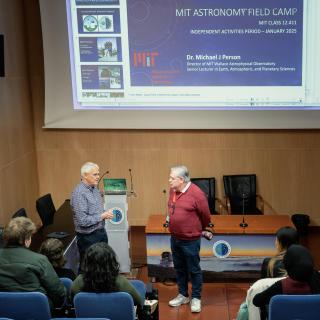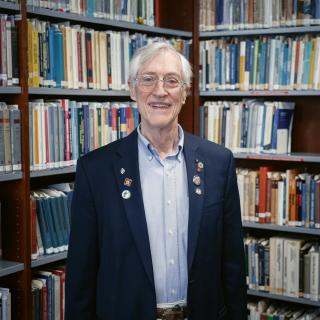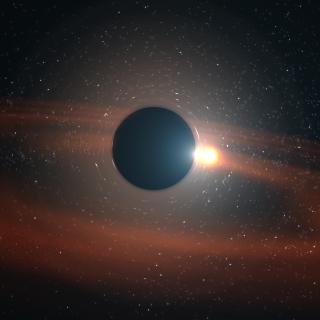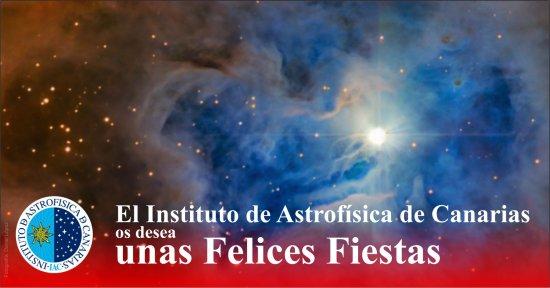It may interest you
-
 This January, the Instituto de Astrofísica de Canarias is hosting, for the third time, the ‘ MIT Astronomy Field Camp’, the historic scientific camp that the Massachusetts Institute of Technology (MIT) offers to its students of planetary sciences and astronomy with the aim of providing them with the real experience of working in a professional observatory. On this occasion, nine students have been at the Teide Observatory, in Tenerife, since 7th January, where they have carried out various astronomical observations. Dr. Michael Person has been the coordinator of this activity that began inAdvertised on
This January, the Instituto de Astrofísica de Canarias is hosting, for the third time, the ‘ MIT Astronomy Field Camp’, the historic scientific camp that the Massachusetts Institute of Technology (MIT) offers to its students of planetary sciences and astronomy with the aim of providing them with the real experience of working in a professional observatory. On this occasion, nine students have been at the Teide Observatory, in Tenerife, since 7th January, where they have carried out various astronomical observations. Dr. Michael Person has been the coordinator of this activity that began inAdvertised on -
 The Museo de la Ciencia y el Cosmos, part of the Organismo Autónomo de Museos y Centros del Cabildo de Tenerife, will host a conference by the astrophysicist and 2006 Nobel Laureate in Physics, John Mather, entitled ‘Unsolved mysteries of physics and astronomy’, on Friday 9th May. Mather receives this week the recognition as Doctor Honoris Causa of the Universidad de La Laguna (ULL) with the sponsorship of the researcher of the Instituto de Astrofísica de Canarias (IAC) and Doctor Honoris Causa of the ULL, John Beckman. Mather's lecture, which will be in English, will be presented by theAdvertised on
The Museo de la Ciencia y el Cosmos, part of the Organismo Autónomo de Museos y Centros del Cabildo de Tenerife, will host a conference by the astrophysicist and 2006 Nobel Laureate in Physics, John Mather, entitled ‘Unsolved mysteries of physics and astronomy’, on Friday 9th May. Mather receives this week the recognition as Doctor Honoris Causa of the Universidad de La Laguna (ULL) with the sponsorship of the researcher of the Instituto de Astrofísica de Canarias (IAC) and Doctor Honoris Causa of the ULL, John Beckman. Mather's lecture, which will be in English, will be presented by theAdvertised on -
 The team led by Claudia Gutiérrez from the ICE-CSIC and IEEC has used the Gran Telescopio Canarias (GTC) and the Nordic Optical Telescope (NOT), at the Roque de Los Muchachos Observatory, of the Instituto de Astrofísica de Canarias (IAC), in La Palma. The CSS161010 burst reached its maximum brightness in just 4 days in a small galaxy 500 million light-years away from us. An international scientific team, led by the Institute of Space Studies of Catalonia (IEEC) and the Institute of Space Sciences (ICE-CSIC), has managed to detect an exceptionally fast and bright cosmic burst in a smallAdvertised on
The team led by Claudia Gutiérrez from the ICE-CSIC and IEEC has used the Gran Telescopio Canarias (GTC) and the Nordic Optical Telescope (NOT), at the Roque de Los Muchachos Observatory, of the Instituto de Astrofísica de Canarias (IAC), in La Palma. The CSS161010 burst reached its maximum brightness in just 4 days in a small galaxy 500 million light-years away from us. An international scientific team, led by the Institute of Space Studies of Catalonia (IEEC) and the Institute of Space Sciences (ICE-CSIC), has managed to detect an exceptionally fast and bright cosmic burst in a smallAdvertised on
